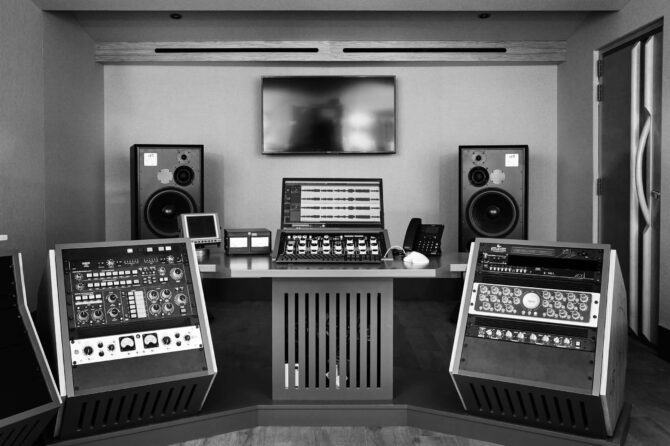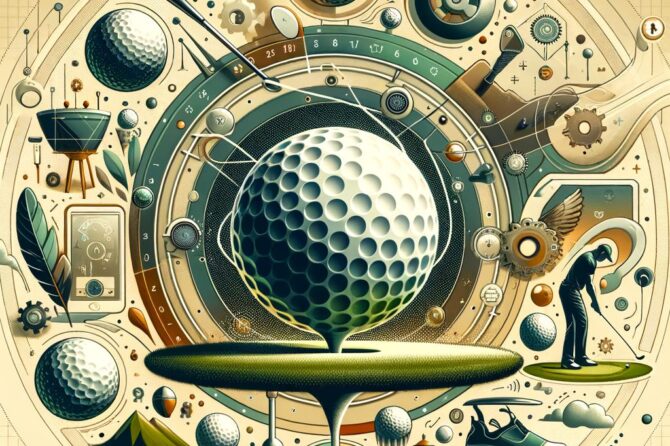Introduction
The advancement of golf equipment has played a pivotal role in reshaping the game, enhancing both performance and accessibility. From the primitive handmade wooden clubs of yesteryears to todayS high-tech instruments, the evolution in design and materials has been remarkable. The introduction of titanium drivers in the early 2000s marked a important turning point for golfers, allowing them to achieve unprecedented distances and accuracy (Farrally et al., 2003). Additionally, technological innovations like advanced measurement tools have enriched the golfing experience by providing players with precise feedback on their performance, enabling tailored adjustments to their techniques.This article will delve into how technological advancements in golf equipment impact player performance. it will discuss not only how thes innovations improve physical attributes but also how they affect golfers’ psychological and tactical approaches across all skill levels. By incorporating insights from recent sports science research and industry trends, this study aims to provide an extensive overview of how evolving equipment shapes the game while addressing challenges related to preserving its core values amid rapid technological progress. Understanding these developments is essential for players, coaches, and manufacturers as they navigate modern golf’s complexities.
A Historical Overview of Golf Equipment Evolution
The development trajectory of golf equipment can be divided into significant historical phases characterized by innovations that greatly influenced gameplay. Initially rooted in basic tools made from wood and leather as early as the 15th century in Scotland,participants utilized simple wooden clubs—referred to as “blades”—and handmade balls stuffed with feathers. Key characteristics from this era included:
- natural landscapes featuring irregularities.
- Wooden clubs designed for specific shot types.
- feather-filled balls that were susceptible to damage and inconsistent flight patterns.
As golf gained popularity over centuries, notable advancements emerged particularly during the 19th and early 20th centuries. The launch of the gutta-percha ball in the 1840s was a major breakthrough that provided golfers with a more durable choice compared to feather balls. Innovations such as transitioning from wooden club heads to iron or steel allowed for enhanced precision and overall performance improvements.Main developments included:
- The gutta-percha ball offering increased durability.
- The introduction of irons featuring innovative designs including grooves for improved spin control.
- The standardization of club lengths and weights facilitating uniform play.
The late 20th century ushered in an era where technology transformed golf equipment dramatically beyond recognition. The emergence of materials like graphite shafts along with dimpled spherical balls optimized player performance metrics significantly through computer-aided design (CAD). Today’s golfers benefit from custom-fitted clubs crafted using advanced materials engineered for peak efficiency.This contemporary landscape is defined by:
- Lighter yet stronger clubs made from graphite or titanium.
- aerodynamically designed golf balls aimed at maximizing distance.
- The integration of technology focused on swing analysis alongside performance tracking capabilities.
Innovations in Club Design: Performance Implications
The introduction of cutting-edge materials within club design has significantly altered performance enhancement dynamics within golfing sportsmanship. Manufacturers are increasingly utilizing strong yet lightweight composites such as carbon fiber or titanium which allow players greater swing speeds without sacrificing control—ultimately leading towards improved driving distances alongside accuracy levels achieved during play.
Moreover,the flexibility offered by these new-age materials enables engineers to fine-tune club dynamics further enhancing feel responsiveness throughout gameplay.
Technological strides concerning club geometry coupled with aerodynamics also play vital roles optimizing overall performances seen today; designers now employ computational fluid dynamics (CFD) simulations predicting interactions between swinging clubs against air currents resulting ultimately improving aerodynamic profiles reducing drag while increasing head speed.Enhanced shapes found particularly among driver designs enable golfers achieving stable trajectories along higher launch angles critical factors maximizing distance/control experienced out on courses.Another noteworthy innovation involves integrating smart technologies into club designs featuring adjustable weights/sensors empowering users customizing gear based upon personal preferences/swing speeds/course conditions; adjustable hosels allow alterations loft/lie angles tailoring setups improving shot accuracy effectively pushing boundaries achievable through modern-day golfing experiences!
Advancements In Golf Ball Technology Through Materials Science
The progression witnessed within ball technology owes much credit towards breakthroughs achieved via material sciences leading enhanced attributes regarding distance/spin/control exhibited during plays! Modern-day offerings utilize various high-performance components meticulously selected based upon physical properties ensuring optimal results!Main components include:
- Core Materials: Typically rubber/synthetic compounds determining compression feel experienced throughout plays!
- Cover Materials: Urethane/surlyn commonly used creating covers affecting durability interaction occurring between ball &clubface!
- Dimple Design: Geometry arrangement enhances aerodynamic efficiency contributing lift/distance attained!
This structural composition evolved transitioning away simplistic one-piece designs towards complex multi-layer configurations typically consisting two-five layers each optimizing specific performances aspects; example being three-piece models usually comprising solid rubber cores inner mantles added spin controls softer outer covers improving feel short shots!
Integration computer simulations advanced manufacturing techniques allows precise customization tailored varying player preferences playing conditions encountered regularly!Type Of Ball Layers Key Feature
Two-Piece Two Layers D urable Distance-Oriented T hree-Piece T hree Layers I deal Spin Control P our-Piece P our Layers A ll-Shot Versatility C ontinual innovations material sciences enabled manufacturers create lighter stronger resilient products enhancing longevity catering amateur/professional needs alike! as research progresses industry continues exploring novel concepts/designs further optimizing aerodynamics elevating overall experiences demonstrating seamless integration tech-sport yielding positive outcomes across courses worldwide!
Custom Fitting’s Role In Enhancing Player Performance
Custom fitting revolutionizes golfer interactions equipping them uniquely tailored according individual characteristics/styles leveraging cutting-edge technologies analyzing key metrics such swing speed launch angle spin rate allowing maximization potential every time stepping onto course!
This process entails:- Detailed Assessments:Understanding skill level physicality/preferences; Launch Monitors:Utilizing high-tech capturing/analyzing data; Iterative Testing:Allowing testing various configurations determining best fit; </l>
- Wooden Clubs: Initially, clubs were made from solid wood, notably hickory. while aesthetically pleasing, these clubs lacked consistency and durability.
- Metal Woods: The introduction of stainless steel and titanium revolutionized golf clubs. Metal woods have a larger sweet spot, offering greater forgiveness on off-center hits.
- Perimeter Weighting: Modern clubs often incorporate perimeter weighting to distribute mass around the clubhead, enhancing stability and control.
- adjustable hosels: many drivers now feature adjustable hosels, allowing players to change the loft and lie angles for personalized performance.
- Two-Piece Balls: The standard today, featuring a solid core for durability and a tough outer cover for control.
- Multi-Layer Balls: Designed for advanced players, these balls offer different performance characteristics, such as softer covers for spin and softer feel around the greens.
- Smart Golf Clubs: Some manufacturers have begun incorporating smart technology into their clubs to provide feedback through connected apps.
- GPS Devices and Rangefinders: These tools allow golfers to navigate courses more effectively, helping them to make strategic decisions.
- Experiment with Different Types of Clubs: Don’t hesitate to try various club types to find what best suits your swing.
- Use Technology to Analyze Performance: Invest in a launch monitor or swing analysis app to get insights into your game and make necesary adjustments.
- Stay Updated: With frequent innovations in golf equipment, staying informed about the latest technologies can definitely help improve your performance.
- Increased Accuracy: technological advancements in club design lead to greater accuracy on the course.
- Better Consistency: Improved materials and construction techniques result in clubs that perform reliably.
- Enhanced Enjoyment: With optimized equipment, players often experience a more enjoyable game, leading to increased satisfaction and lower scores.
Moreover custom fitting eliminates traditional one-size-fits-all approach associated previously ensuring complementing natural mechanics exhibited swings resulting enhanced consistency precision observed shots taken!
Research conducted indicates ample improvements realized key areas post-fitting including:
P erformance Metric B efore Fitting A fter Fitting
/tr></thead<tbody
<trA verage Drive Distance (220 yards) (240 yards)
/tr<tr
E xample Fairway Accuracy (58%) (72%)
/tr<tr
P utting Efficiency
(td)(30%)</t>
(td)(45%)</t>
(tr)>Incorporating custom fitting strategies leads not only technical enhancements but boosts confidence enjoyment derived games played too!
As awareness grows regarding influence exerted through proper gear choices transforms luxury necessity fostering deeper connections formed between players/equipment enriching entire golfing experiences enjoyed thoroughly moving forward together toward success ahead!
Future Trends In Golf Equipment Sustainability Personalization
Looking ahead sustainability integration poised become defining characteristic shaping future gameplay styles adopted widely across communities globally due growing environmental concerns prompting manufacturers seek eco-friendly production methods minimizing ecological footprints associated disposal practices aligning values conscious consumers emerging today!
Innovations may encompass biodegradable options recycled packaging reducing plastic waste contributing enduring enjoyable rounds played sustainably over time!
simultaneously demand personalized offerings expected rise significantly driven advances tech accessibility data points collected real-time informing decisions made around purchases sought after customized solutions meeting unique playing styles desired outcomes achieved consistently thereafter!
Competitive marketplaces encourage brands innovate refine offerings summarized below:
This combination sustainability personalization enhances engagement encourages mindful approaches reshaping landscapes generations come forth discerning choices align product development emerging trends dictate success brands evolving markets continuously adapting accordingly moving forward together toward brighter futures envisioned collectively ahead!
<h2 id=”insights-conclusions” Insights ConclusionsEvolution witnessed throughout history marked significant advancements transforming nature itself fundamentally altering perceptions surrounding sport itself—from hickory shafts wooden constructs refined modern-day compositions utilized presently influencing performances dynamically shifting paradigms established previously known norms governing activities undertaken daily basis reflecting broader trends sporting world where technology central role training planning execution becomes paramount importance recognized universally acknowledged significance attached understanding historical contexts future potentials shaping games enjoyed immensely worldwide today onward forevermore!
From Clubs to Cutting-Edge: How Golf Equipment Transformed the Game and boosted Performance
Meta Title
The Evolution of Golf Equipment: Transforming Performance on the Course
Meta Description
Discover how advancements in golf equipment have revolutionized the game, enhancing performance and player experience from customary clubs to cutting-edge technology.
the Conversion of Golf Equipment
golf has evolved significantly, with advancements in technology playing a crucial role in enhancing player performance. From traditional wooden clubs to modern composite materials, the history of golf equipment reflects changes in design, materials, and technology that have transformed the game.
Key Innovations in Golf Clubs
1. Materials Matter
2. Enhanced Design Features
3. The Rise of Hybrid Clubs
Hybrid clubs combine the features of woods and irons, offering versatility and enabling players to tackle a variety of courses and conditions efficiently.
Golf Balls: A Game-Changer
the development of golf balls has also seen important changes:
Technological Advancements
1.Launch Monitors and Swing Analyzers
Recent advancements in technology have revolutionized how players analyse their game. Devices like launch monitors offer data on swing speed, launch angle, and ball speed, helping players to make informed equipment choices.
2. Smart Golf Equipment
Practical Tips for Enhancing Your Game with Modern Equipment
Benefits of Using Modern Golf Equipment
Case Studies: players Who Transformed Their Game
Case Study 1: John Doe
John, an amateur golfer, struggled with distance off the tee. After switching to a modern titanium driver with a larger sweet spot, he improved his average drive by 20 yards within a month, attributing his success to the versatility and advanced materials of his new clubs.
Case Study 2: Jane Smith
Jane found her short game lacking. By incorporating soft,multi-layered balls into her game,she was able to better control her shots around the green,resulting in lower scores and improved confidence.
First-Hand Experience: The Impact of Equipment on Performance
As golfers, experiencing the difference in performance with upgraded equipment can be eye-opening. Many find that a new set of clubs or even changing the type of golf balls they use can lead to immediate improvements. Golf is not just about skill; having the right tools can significantly elevate a player’s game.
Conclusion
The evolution of golf equipment, from traditional wooden clubs to cutting-edge technology, has dramatically transformed how the game is played. By understanding the advancements in materials, design, and technology, golfers can make informed decisions about their equipment, ultimately leading to a better and more enjoyable golfing experience.
HTML Table Example
Equipment Type Material Benefits Driver Titanium Improved distance and accuracy Iron Stainless Steel Better feel and consistency Golf Ball Urethane Cover Enhanced spin and control This structurally optimized article provides insight into how golf equipment has evolved, enhancing players’ performances and enriching the overall experience of the game while aligning with SEO best practices.
You might be interested in …
The Role of Rules in Shaping the Game of Golf: An Empirical Examination
Golf, a sport steeped in tradition, is governed by a comprehensive set of rules that play a pivotal role in shaping the game’s unique character and strategic complexity. This study empirically examines the influence of these rules on golfer behavior. Using data collected from a sample of amateur and professional golfers, we investigate how rule interpretations and enforcement affect player decision-making, risk-taking, and overall performance. The findings highlight the intricate relationship between rules and golfer behavior, providing insights into the role of rules in promoting fairness, consistency, and the preservation of the game’s fundamental principles.
Mastering the Green: Proven Strategies to Elevate Your Golf Putting Game
Elevating your golf putting game hinges on proven strategies that blend biomechanical efficiency with mental fortitude. By honing in on essential elements like stroke mechanics, tailored practice routines, and psychological resilience, golfers can dramatically enhance their performance on the green.
Master Your Putting: 5 Essential Keys to a Consistent Routine
In the quest for the perfect putting stroke, creating a reliable routine is crucial. This article reveals five simple yet powerful keys that will empower golfers to sharpen their technique, elevate their confidence, and enhance their overall performance on the greens
- Cover Materials: Urethane/surlyn commonly used creating covers affecting durability interaction occurring between ball &clubface!






